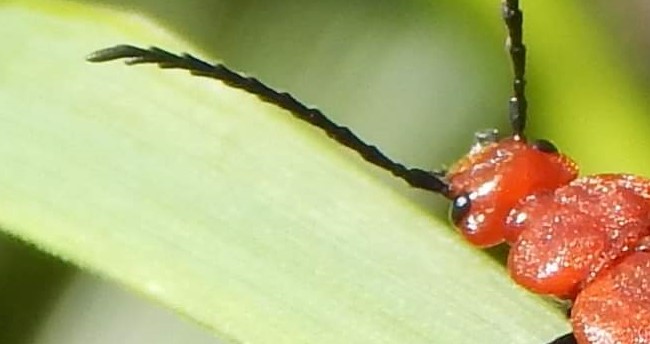
[288] Pyrochroa serraticornis, Cardinal Beetle and other Beetles
Introduction
We have met several beetles and this blog collects all the many other species seen in the UK, including Pyrochroa serraticornis, the (Common) Cardinal Beetle.
Pyrochroa coccinea and the closely related Schizotus pecticornis, are also known as Cardinal Beetles.
Taxonomy
Kingdom – Animals
Phylum – Arthropods
Class – Insects
Order – Coleoptera
Suborder – Polyphaga
Infraorder – Cucujiformia
Superfamily – Tenebrionoidea
Family – Pyrochroidae (Fire-coloured Beetles)
Subfamily – Pyrochroinae
Genus – Pyrochroa
Scientific Name – Pyrochroa serraticornis
See text for other beetles
Name
Like the Cardinal birds and many other things called cardinals, the Cardinal Beetle derives its name from the vivid red colour of Roman Catholic Cardinals. (You will not find Cardinal birds in the UK. They are native to the Americas.)
It won’t surprise you (if you haven’t picked it up from these blogs) that pyro-chroa, from Ancient Greek roots, means fire-colour, and serrati-cornis means having serrated antenna.
For other species, see text below.
Beetles
There are about half a million species of beetle, of which about five thousand are seen in the UK. They are divided into well over 200 families and I will not attempt to look at them all.
You can find other beetles in this blog from the Beetle category listed below.
Before I go on to individual species it’s worth remembering that beetles are fully metabolous and spend most of their life in the larval stage, underground or otherwise out of sight. But we only ever see the adult stage, which may be a short period of mating and egg-laying.
My only requirement for those that have chosen to include in this blog is that I have good pictures. So here they are, in no particular order.
[A] Cardinal beetle
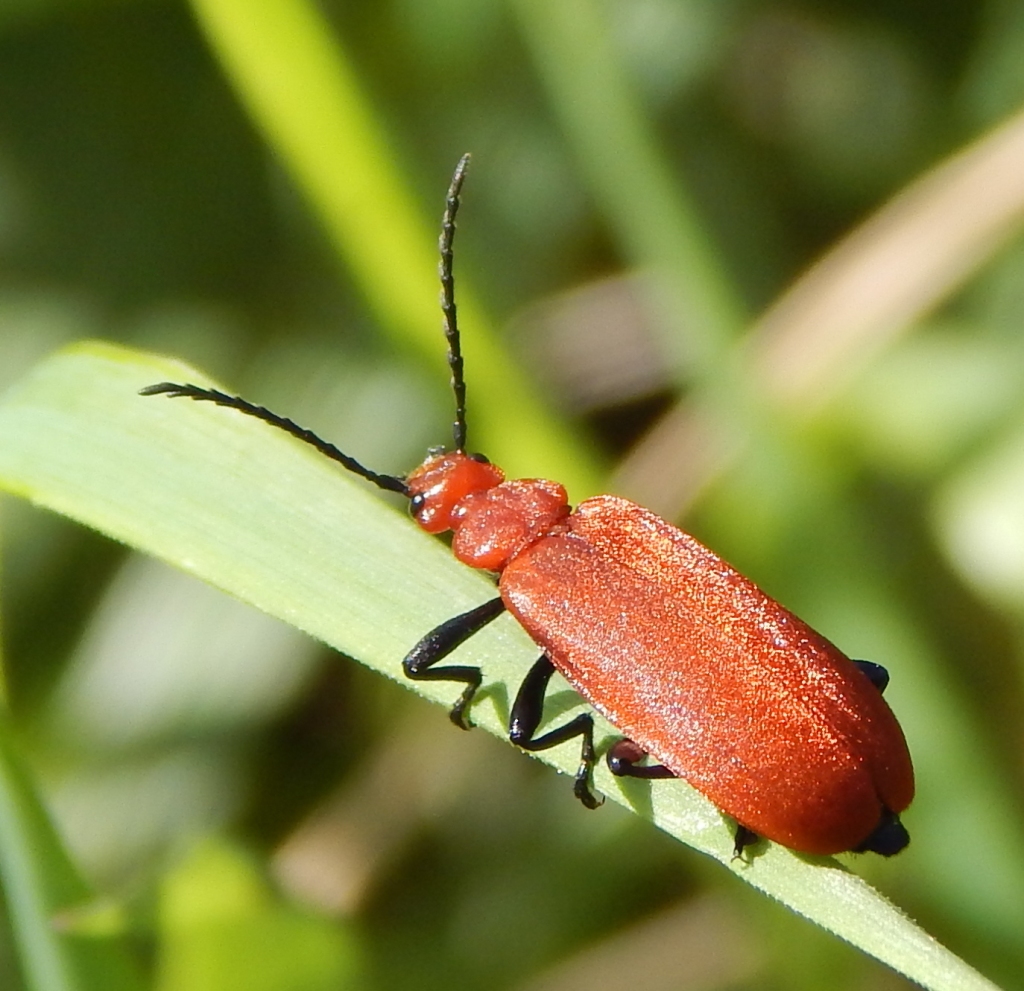
Pyrochroa serraticornis is one of about 150 species of Fire-coloured Beetles (Pyrochroidae) that look a fiery red or orange-red. The larvae live under the bark of trees and Wikipedia notes that while they normally eat fungus, if it gets crowded, they will eat each other.
[B] Carpet Beetle
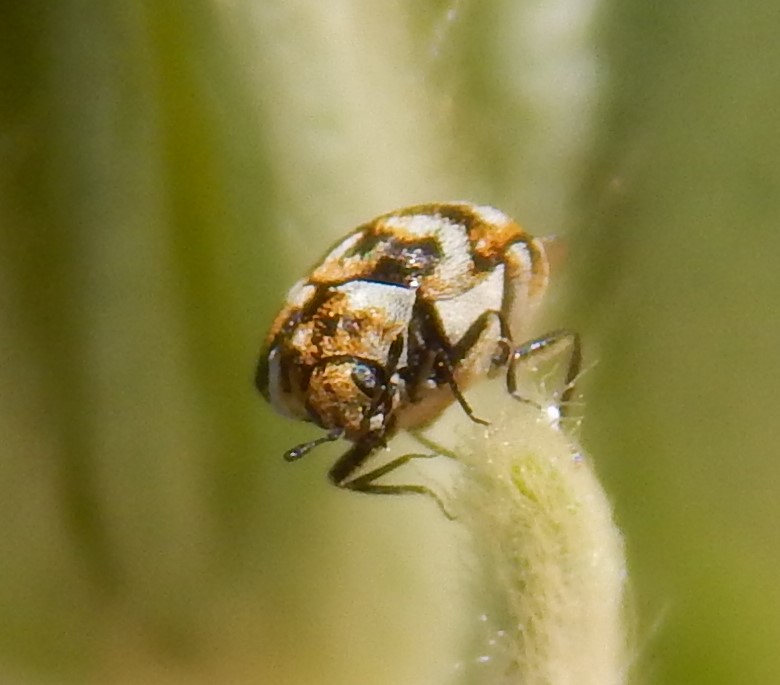
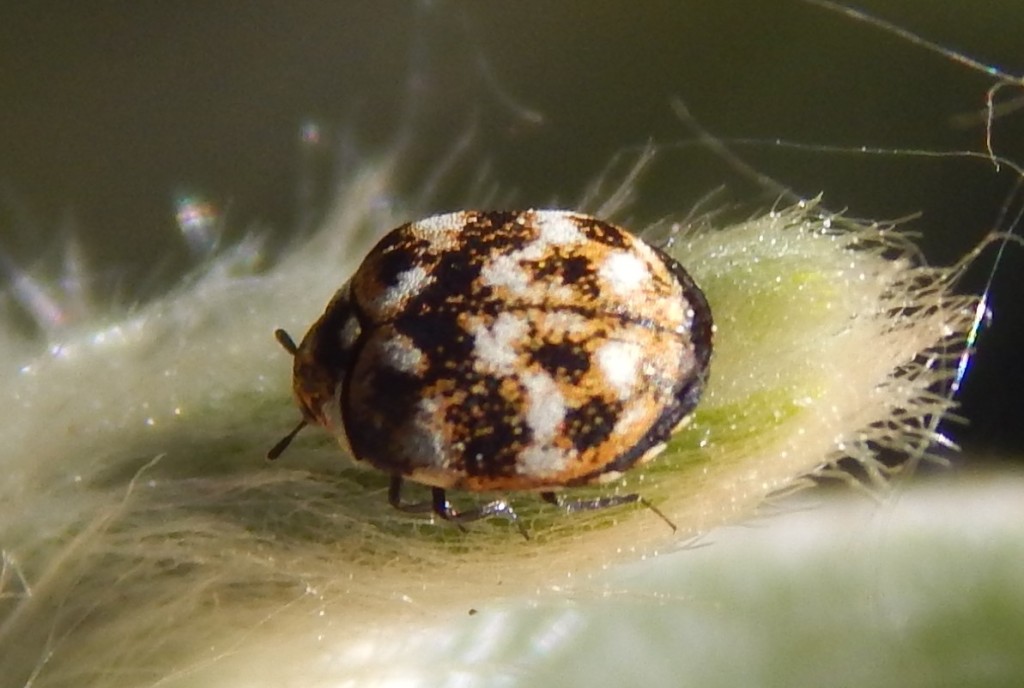
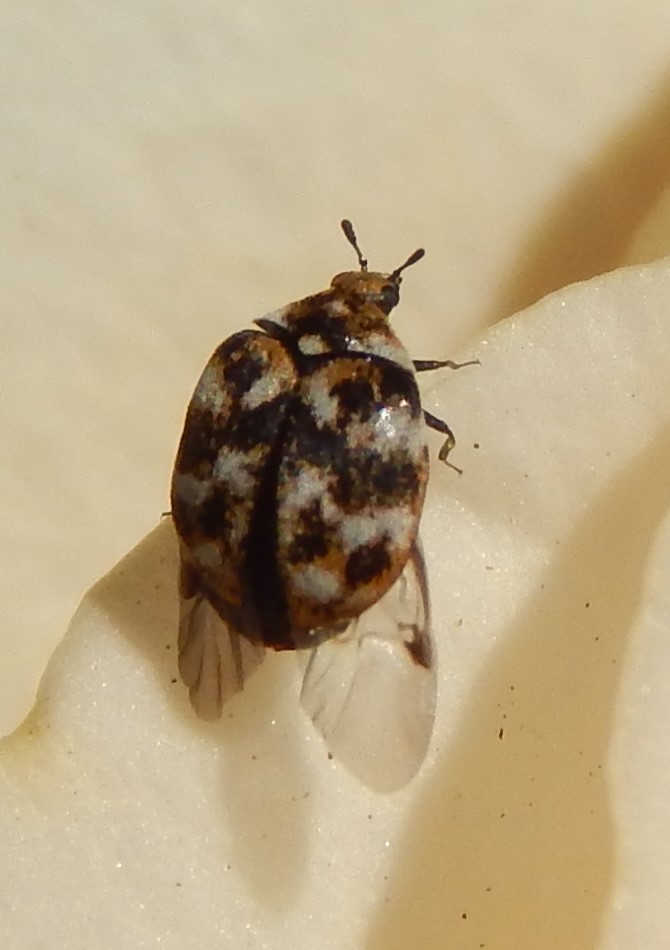
Anthrenus verbasci, the Varied Carpet Beetle, is in the family Dermestidae, which has over 500 species often called Skin Beetles, Leather Beetles or Carpet Beetles. Larvae, especially from the genus Anthrenus, can cause extensive damage to stored wool, leather, silk, feathers and other materials. This makes them unwanted pests and gives them their names. (Anthrenus comes from the Ancient Greek anthrene, a hornet or wasp. Verbascum is a genus of plants known as Mulleins. The genitive ending verbasci suggests that it is one possible food plant for this beetle.)
The larvae are quite hairy and are one of several species known as woolly bears. They develop often in the nests of birds or in stored fabrics. Larval and pupal stage may take from one to three years, depending on their environment.
Adult beetles, that look like small [278] Ladybirds, live for only about two weeks.
[3] Cereal Leaf Beetle
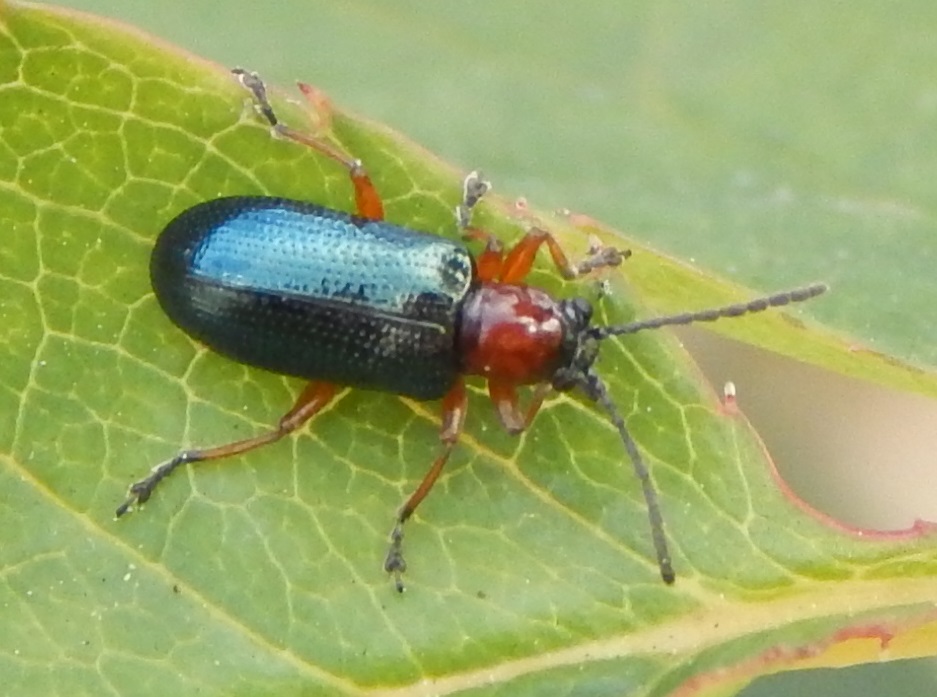
Oulema melanopus, the Cereal Leaf Beetle, is in the family Chrysomelidae, Subfamily Criocerinae, Tribe Lemini. There are about 50 000 species in the Chrysomelidae family, loosely known as Leaf Beetles.
(Oulema is somehow derived from Lema, another genus in the same tribe, from which Lemini is derived. Melanopus is a New Latin word meaning black and red.)
This beetle is one of the worst members of Chrysolemidae as a crop pest. The larval stage, which only lasts two to three weeks, does all of the crop damage at its critical growing stage. Pupation underground also lasts two to three weeks and the adults normally overwinter, hidden in protective crevices.
It is native to Europe and Asia but has spread with agriculture to other countries. It eats most cereals and other grasses but particularly sems to like the major crops Oats, [177] Barley, Rye and [345] Wheat.
[4] Oil Beetle
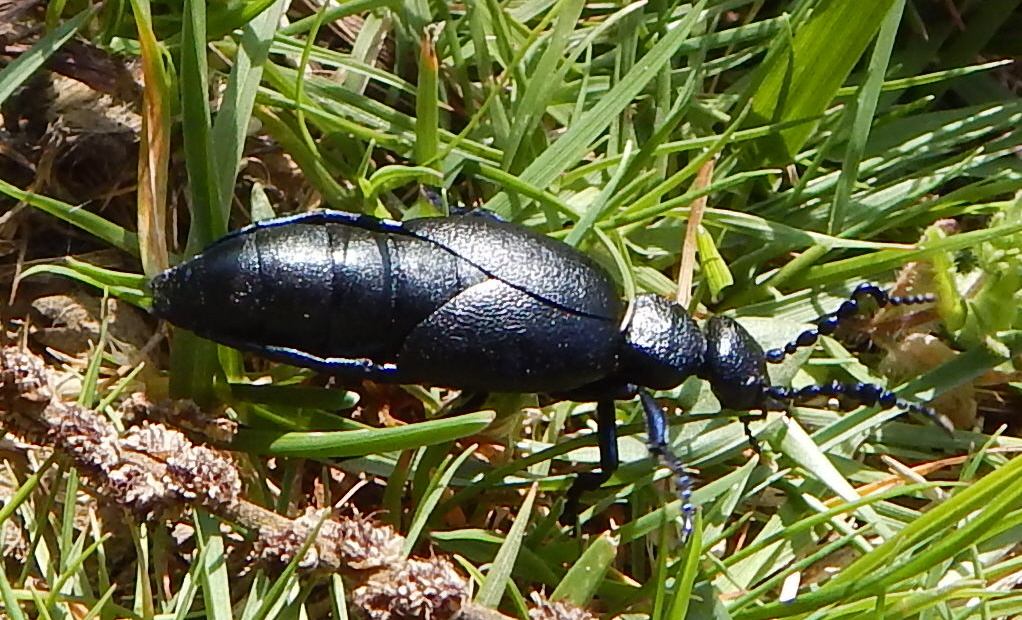
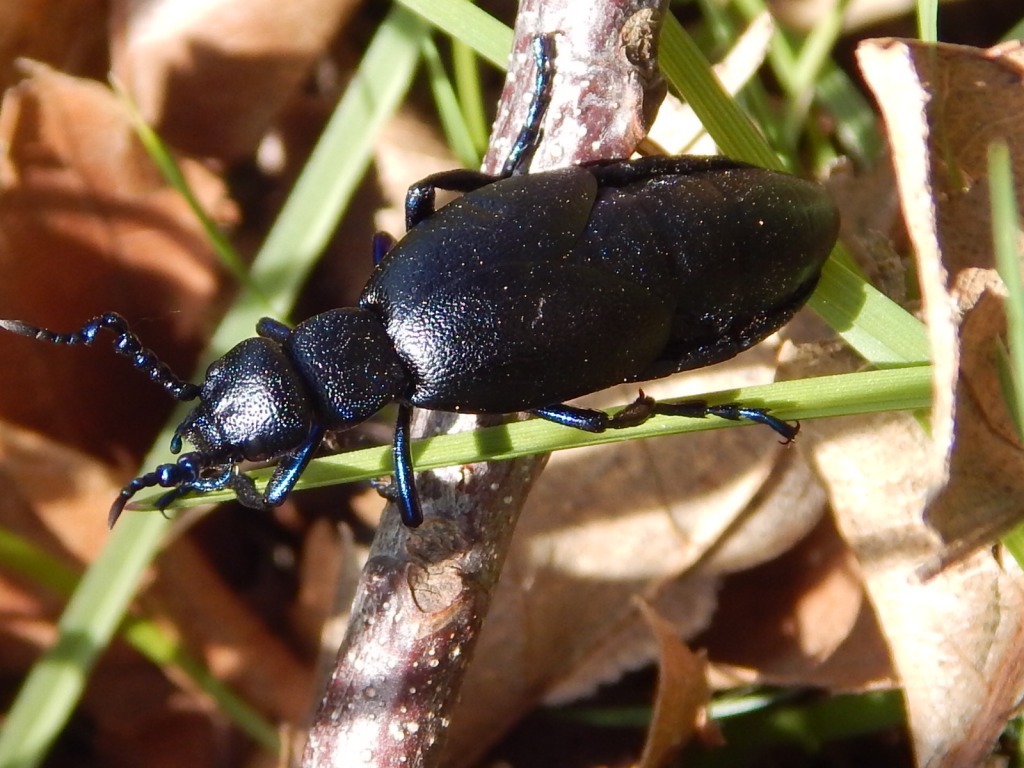
Meloe proscarabaeus is a European species of Oil Beetle. All species in the genus Meloe are generally called oil beetles. This may come as a surprise – but the genus Meloe comes in the Meloidae family, Meloinae subfamily, and Meloini tribe!
They are called oil beetles because when disturbed they release oily droplets of haemolymph (the insect equivalent of blood,) from their joints. Most species, including Meloe proscarabaeus, are flightless. They lack the hind wings and hence the elytra are smaller. (Meloe has been used since about 1650 but its origins are unknown. Proscarabaeus relates to the Scarab Beetles in the family Scarabeidae. Scarab is an ancient name for various types of beetle.)
Meloe proscarabaeus is found over all of Europe except the far north. When the larvae hatch, they climb into a flower and wait for a solitary bee (such as [024] Andrena.) They attach themselves to the bee, return to its nest and feed on the eggs and the pollen and nectar collected for the nest. The pupal stage takes place still in the solitary bee’s nest. The newly emerged imago seeks a mate immediately on emergence.
[5] Dor Beetle
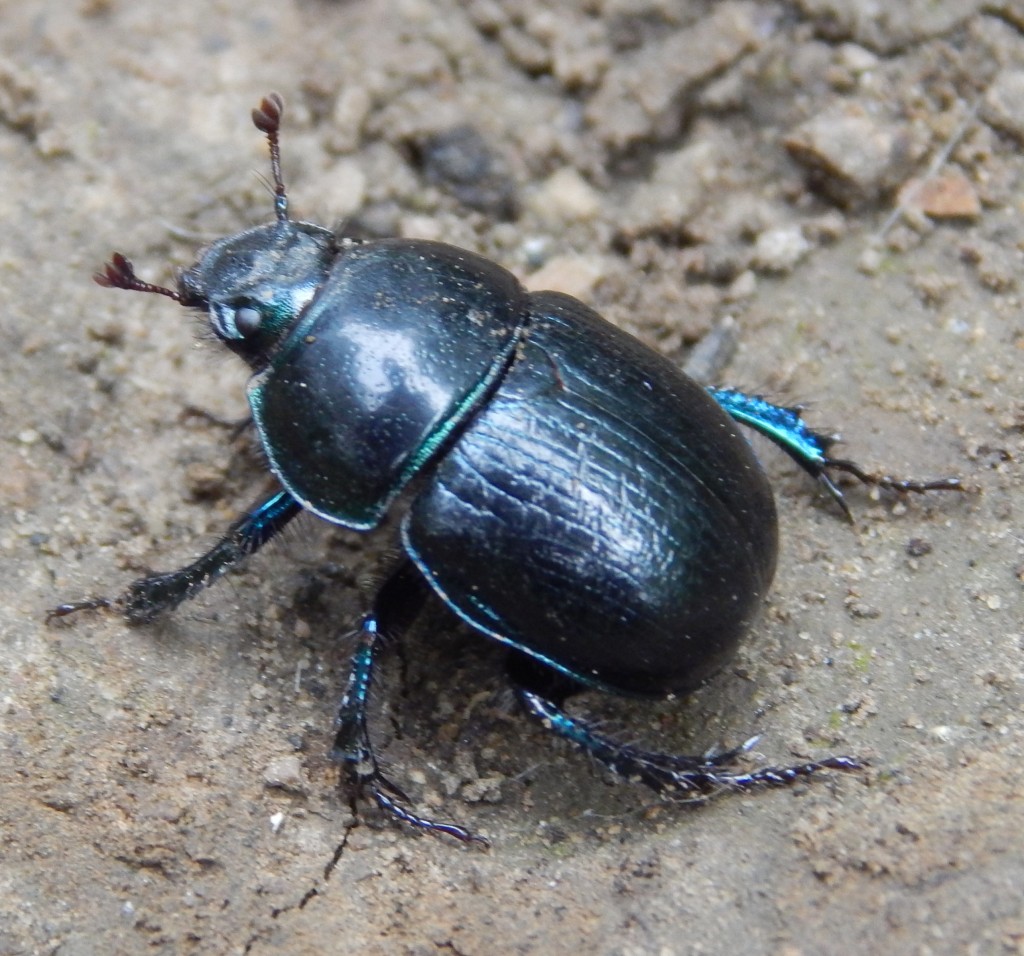
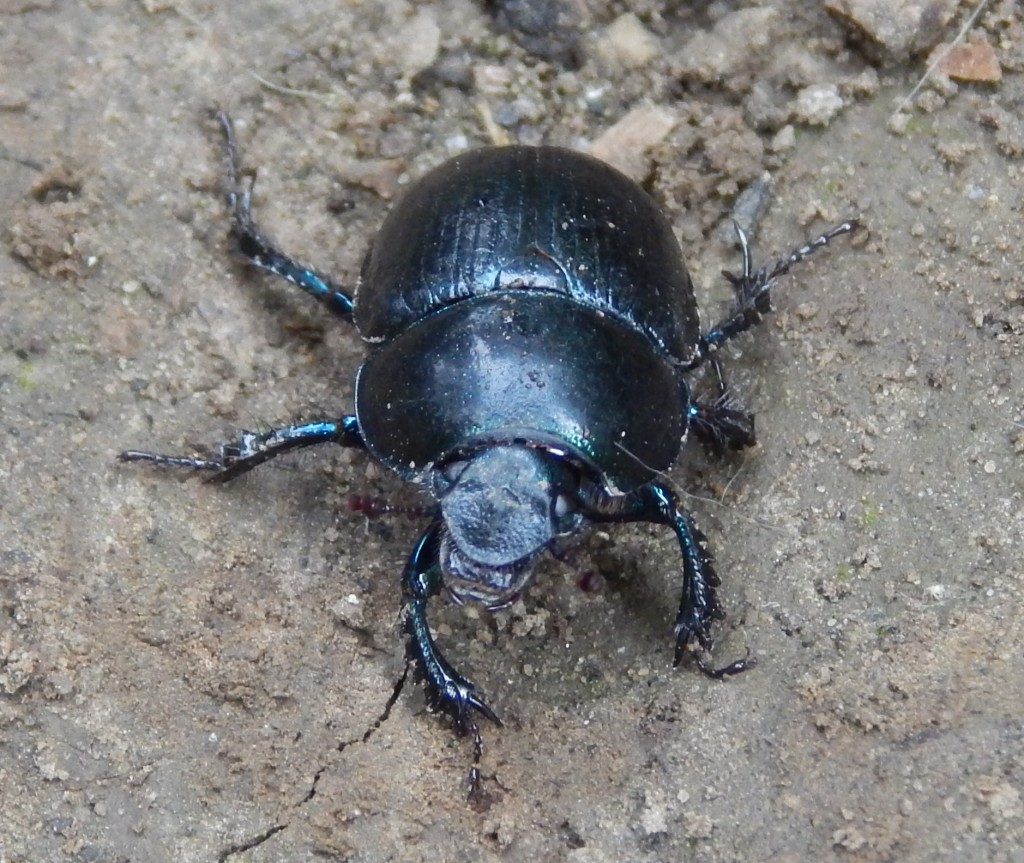
Anoplotrupes stercorosus, the Dor Beetle, is a species of earth-boring dung beetle in the Geotrupidae family. (Dor is a Middle English name for this insect, from the humming noise as it flies. It comes from Old English for a general humming insect, cognate with drone. Geo-trupi- means earth-boring and anoplo- means unarmed. Stercoro- relates to dung, so the scientific name means an unarmed (earth-)boring dung beetle.)
It is present throughout Europe and where cattle have been introduced. They generally live in forests. This beetle is very similar to Geotrupes stercorarius and can be distinguished by counting tiny bumps on the outside of the hind legs.
Larval and adult phases feed on dung, rotting fungi, litter mould and tree sap. I found one in the Forest of Dean, where it was benefitting from the dung of [328] Wild Boar.
[6] Bloody-nosed Beetle
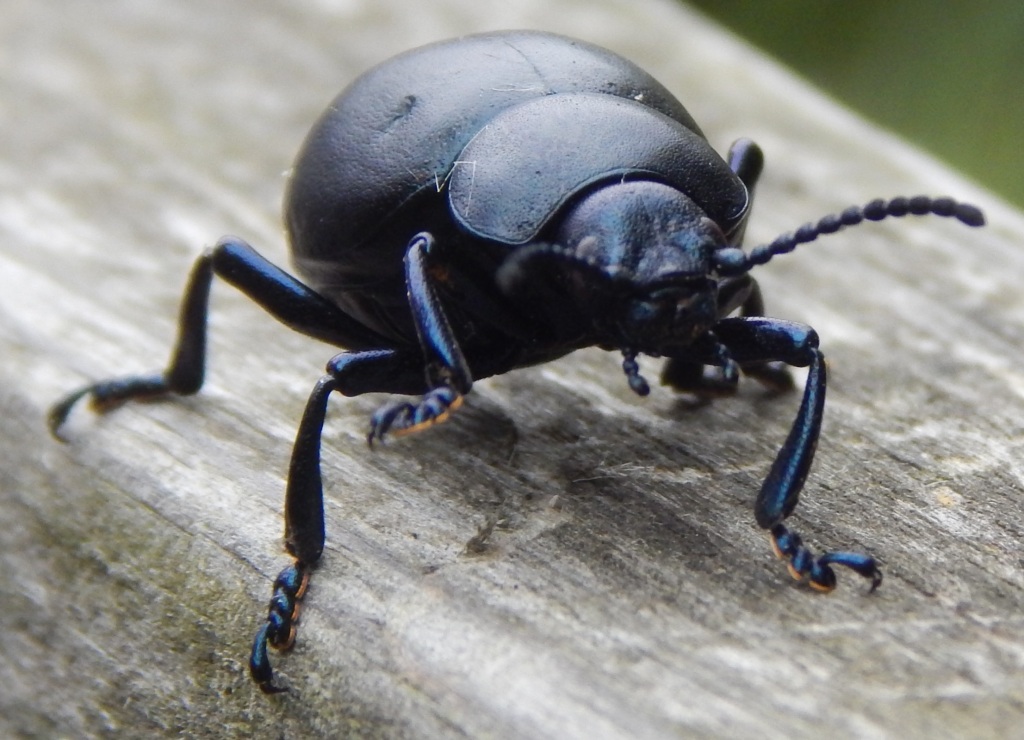
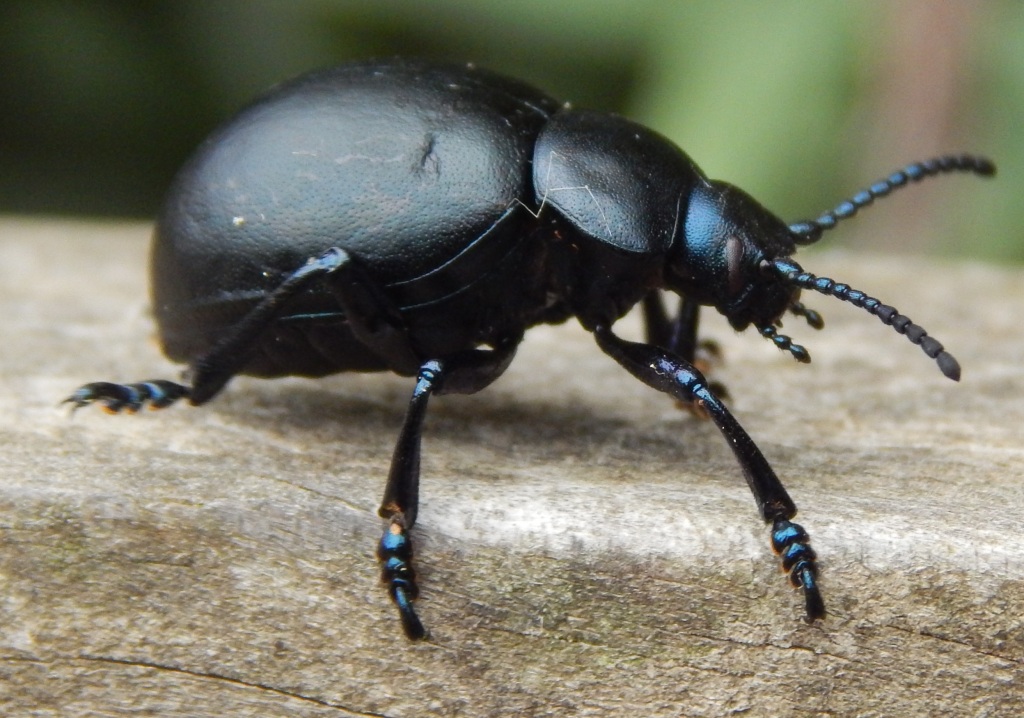
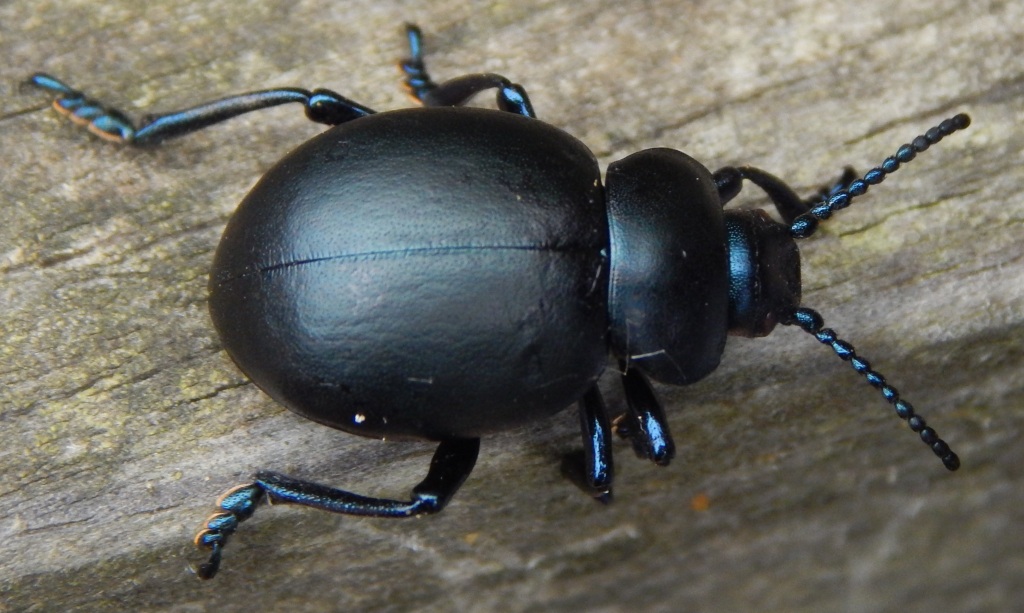
Timarcha tenebricosa, the Bloody-nosed Beetle, is another species from Chrysomelidae, the Leaf Beetles. It gets its name in the same way as the Oil Beetle above. As a defence, they may exude bright red-orange haemolymph from the mouth. (The nearest I can find to the origins of Timarcha is someone called Timarchus who ruled the Seleucid Empire in Media briefly around 160 BC, and another Greek called Timarchus about two hundred years earlier. The Latin tenebricosa means dark or gloomy.)
The larvae feed only on [155] Bedstraw. They pupate over winter.
The last three species here illustrate the fact that most ground-dwelling beetles are completely black in colour – or at least a very dark blue or similar, nearly black, colour
Other Notes
Please note that, as always, common names are not agreed and can be ambiguous. Also note that identification to species level is not always guaranteed.
See also
[300] Rhagonycha fulva will get its own blog post soon. I have already written this. There are thousands of other beetle species but most of them spend almost all of their lives at or below ground level. You are unlikely to see one flying.
